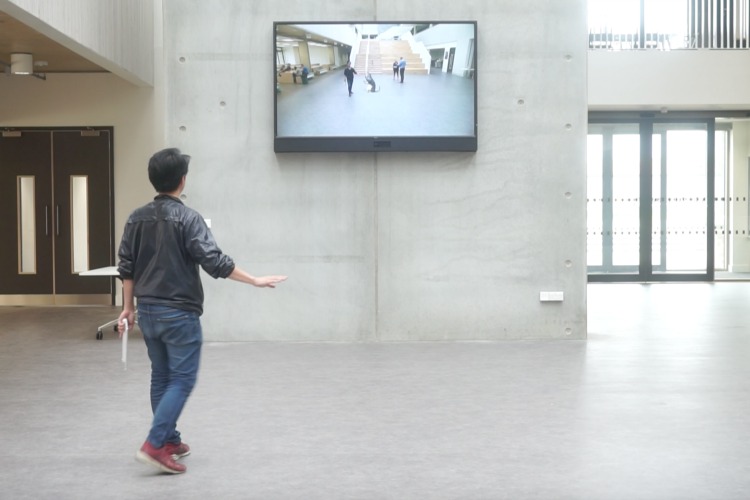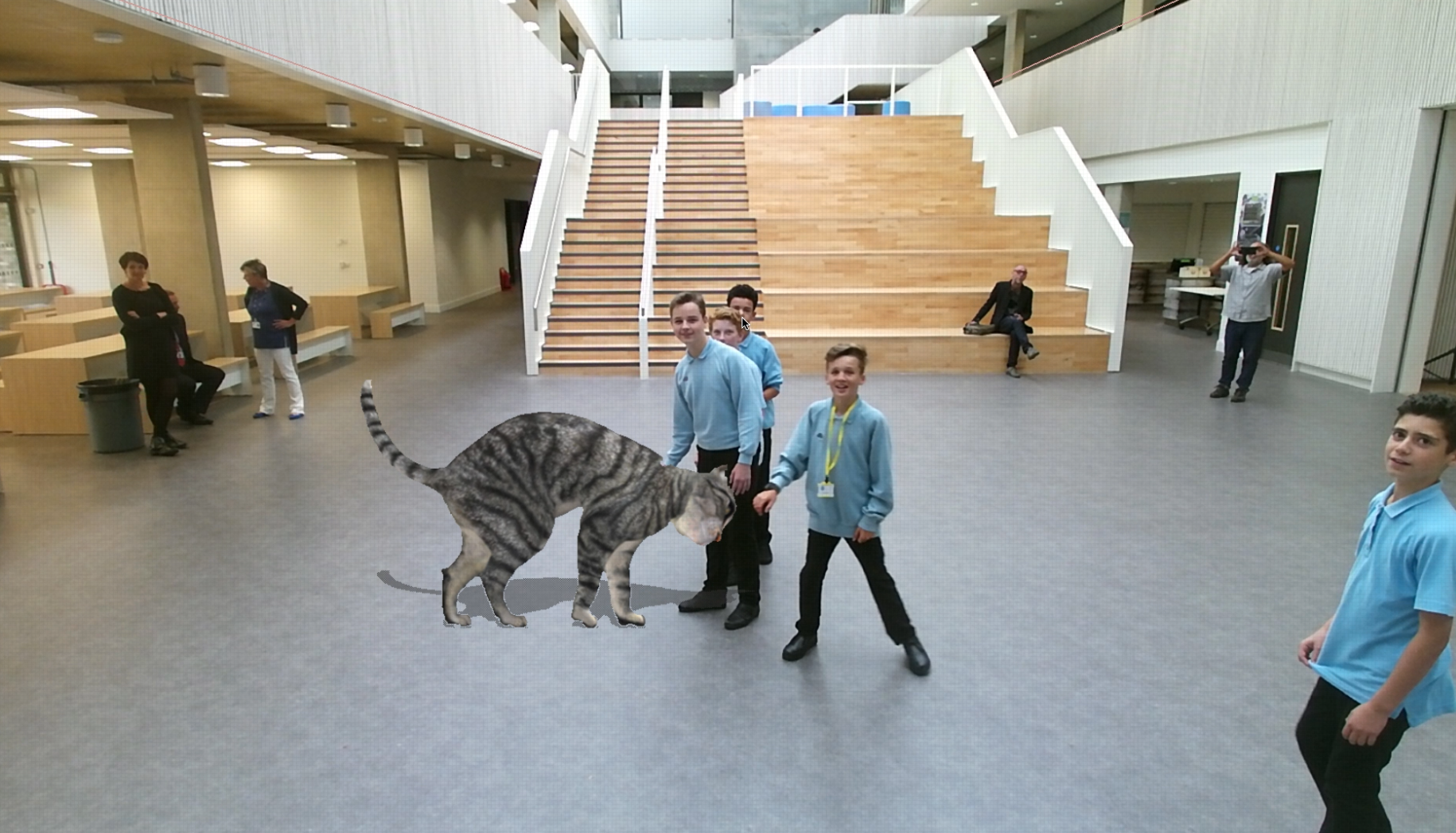In Cambridge, an augmented reality cat in the corridors of the junior high school
Published 8 November 2016 by Elsa Ferreira
In Great Britain, a freshly open junior high school is welcoming a rather peculiar resident: Cinder, an augmented reality cat fed with solar power is in charge of creating awareness on sustainable architecture.
London, from our correspondent
“The cat has a strong historical connotation: in Japan for example, it is a spiritual being that represents chance,” says Ling Tan, the designer in charge of the Cinder project, a virtual cat that roams the corridors of Trumpington Community College. Open last July in Cambridge, this junior high school covered with sensors is firmly focused on new technologies and sustainable architecture. “We wanted to create something that allowed children to give meaning to their environment.” Commissioned by the City of Cambridge Education Foundation, the digital creation studio Umbrellium in London, in collaboration with the children from the junior high school, imagined this augmented cat that lives in the school’s networks and evolves at the whim of environmental changes.
The project of alternate reality, Cinder, presentation by Umbrellium:
Fed on solar power, Cinder roams on the screens of computers distributed to each pupil and on the big screen located in the school hall. The latter is designed like a mirror in augmented reality: sensors and a Kinect convey the movements of the pupils who see themselves on the screen with the virtual animal and can then interact with it.


The ambition of the Cinder project is to make visible and understandable the data collected by the numerous sensors of the school (humidity and solar detector, weather sensor), but also explore mixed and augmented realities. The Umbrellium studio has often explored this overlapping between the physical and the digital world, Ling Tan reminds us, citing the Assemblance project, luminous and collaborative sculptures that the exhibition and digital art event public can modify, build or smash.
Cinder has its share of accessories, for most decided by pupils aged 12 to 14 who make it evolve during weekly workshop classes given by Umbrellium at the high school. For the cold and the snow, a knit cap; for sunny Friday afternoons, a sombrero. The cat also changes color according to the outside temperature. “We always have this approach where we try to bring the public to devise the design of the project, to build it. This project should stay in this junior high school for at least ten years. We don’t want it to be a work of art in space, we don’t want it either to be a game. We really want it to be a virtual animal, that the pupils embrace, take care of, make it grow.”

The cat Cinder allows pupils to talk about solar power but also to understand the function of sensors and linking them to behaviors. But also to discover augmented reality beyond Pokéstops… “When we installed Cinder, Pokémon Go had just been released, Tan reminds us. Many pupils made the connection.”
For more on the Cinder project
